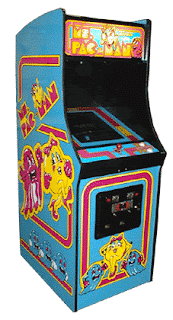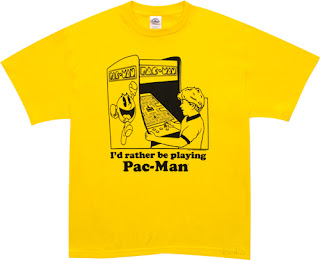Nigel Kitching
“Nigel Kitchen, one of the unsung heroes of British comic book writing, gives a brief run down of his work at Fleetway Publications, and his influence over the guy we all wanted to know during the 90’s – Sonic the Hedgehog. Kitchens influence over the European perspective of the “pesky hedgehog” brought real emotions and story arcs that aimed much higher than the parental guidance recommended. Introducing Robotniks dark history, the concept of an evil dictator taking over the planet, self-replicating metal hedgehogs (responsible even for the name “Metallix), the death of Johnny, the list goes on.” Mart
SONIC THE HEDGEHOG AND ME
 The first issue of Sonic The Comic was dated 29 May 1993. This just happens to be my birthday and I've always felt it was an omen of some kind. But omen or not, I would never have guessed that I would end up writing the adventures of the cool blue hedgehog for around seven years.
The first issue of Sonic The Comic was dated 29 May 1993. This just happens to be my birthday and I've always felt it was an omen of some kind. But omen or not, I would never have guessed that I would end up writing the adventures of the cool blue hedgehog for around seven years.
 My first story appeared in issue 4 and, to be honest, it was a fairly ordinary little adventure involving a Sonic-shaped Badnik. And I'm back again in 6 with another pretty unremarkable tale of Sonic attacking the Death Egg. These first two stories did have little touches I liked; Sonics and Tails' relationship was quite interesting. I remember wondering if I could get away with having Sonic treat Tails quite badly, I wanted Sonic to be a flawed hero. I also made an effort to have my stories be pretty serious rather than humorous. I knew that the readers took Sonic seriously, no matter how cute he may have looked. Cute or not he was still the hero.
My first story appeared in issue 4 and, to be honest, it was a fairly ordinary little adventure involving a Sonic-shaped Badnik. And I'm back again in 6 with another pretty unremarkable tale of Sonic attacking the Death Egg. These first two stories did have little touches I liked; Sonics and Tails' relationship was quite interesting. I remember wondering if I could get away with having Sonic treat Tails quite badly, I wanted Sonic to be a flawed hero. I also made an effort to have my stories be pretty serious rather than humorous. I knew that the readers took Sonic seriously, no matter how cute he may have looked. Cute or not he was still the hero.
But after my first two stories, one thing had become frighteningly obvious to me - I had no more ideas for Sonic. Writing this strip for any period of time was going to be impossible.
But just in time a couple of things happened. The first was I had a meeting with the Editor, Richard Burton, where we talked about a new direction for Sonic in which Robotnik would become the dictator of Mobius and Sonic would form a gang of freedom fighters. Suddenly the possibility of far more interesting stories presented itself.
The second thing was the arrival of the artist Richard Elson. Without Rich I don't think we'd have had anything like the success that we did. But I'll come back to that later.
So my next stories appeared in issues 7 to 10, all drawn by Rich, and for the first time I'm starting to see how this could develop into something really interesting. The art was fantastic - Sonic really moved and the stories looked really exciting. We were on a roll. Or so it seemed.
I was back in issue 18 and Rich was with me. By now Rich and I were becoming good friends and I'd got into the habit of telephoning him before I began my writing. I did this for two reasons; the first was to try to tailor my story to his interests - there's nothing worse than being given a script full of stuff you hate to draw. The second reason was so that we could talk about ideas - lots of the ideas in my scripts I would never have been able to come up with, without having Rich to chat with. In fact some of the ideas were entirely down to Rich.

Over the next ten issues or so we really hit our stride. We introduced new characters like the Marxio Brothers and Captain Plunder, and we also brought in more characters from the games such as Amy and Metal Sonic (whom we named Metallix). The Metallix story featured Sonic time-travelling into the future to save himself, which still confuses me when I think about it even now. I was told by the Editor that this was about as complicated as I should get. Still, I'll bet our readers had no problems at all. The Metallix story stretched over five issues - I'd been pushing for longer stories for a while and this was my chance to prove they would be popular.
Lew Stringer arrived on the Sonic strip with issue 30. Lew used my continuity but found his own way of doing things by populating the strip with his own characters like Metamorphia and Shortfuse. Shortfuse was
probably the most popular character that anyone created for the Sonic strip and he made many appearances.
The next step was to introduce Knuckles, which Rich and I did in issue 33. This was another nice long run of connected stories that led up to issue 39. In these issues I must have been asked to write a one-off seven-page story - I tried my best but, I've got to be honest, "Sonic No More" was a bit of a letdown.
 But things improved with the next story - a loose adaptation of the latest Sonic game "Sonic And Knuckles", lots of Badniks, islands in the sky and Chaos Emeralds. From meeting the fans at conventions I know that this went down very well.
But things improved with the next story - a loose adaptation of the latest Sonic game "Sonic And Knuckles", lots of Badniks, islands in the sky and Chaos Emeralds. From meeting the fans at conventions I know that this went down very well.
Now we came to the Brotherhood of Metallix story. I had a lot of fun with this one. The basic idea was that the Metallix built more robots like himself and turned on his master, Robotnik.
The Metallix story wound up being ten parts long. It brought in Chaotix and more time travel. All in all it was quite an epic. It was never planned to be ten parts; this took a lot of negotiating on my part and a lot of trust on the part of my Editor who was, by this time, Deborah Tate.
Following this was a bunch of one-off stories but this time I seemed to cope with them better. In fact a couple of these, "Smokey And The Badnik" and "The Big Decision", I'm rather proud of. The second of these stories was
about Porker Lewis basically having a nervous breakdown. One of the things that was always at the back of my mind when I wrote Sonic was that we should show some of the consequences of constantly being at war with Robotnik. Every now and again we needed to have something happen that really affected the heroes.
Issue 80 has the first part of "Running Wild" and these three parts plus the following three part "Heroes And Villains" make up one of my favourite stories, involving Sonic being split into two characters - himself and his evil demon-self, Super Sonic. Rich had a big input into this. I don't always remember who thought of which idea but I clearly remember it was Rich's idea to have Sonic split this way. He also supplied an array of supporting villains for whom I only had to make up personalities.
I wanted issue 100 to be something special, not just a big story but something that really changed the set-up.
When you have a winning formula, it's tempting, very tempting, not to mess with it. But I was really beginning to feel it was time to risk shaking
things up a little. It had always bothered me that, no matter how many times Sonic won, Robotnik was still in power, he still remained as the dictator of Mobius. Maybe it was time to change that.
So in issue 100 Sonic finally beat Robotnik. Lew and I pulled all the other Sonic related strips into the plot and came up with one story that filled the entire issue. Two writers and four artists all working on the same story
was a bit of a nightmare but it worked out really well. Deb even let me draw the final part of the story. It wasn't a classic piece of art but I got away with it.
For the complete interview please check..
 When you play the game, it might seem as if the four ghosts are actively chasing you. That’s not exactly true. Iwatani intentionally avoided programming them with that purpose, since that would have resulted in Pac-Man zipping around the screen with four ghosts always right behind him.
When you play the game, it might seem as if the four ghosts are actively chasing you. That’s not exactly true. Iwatani intentionally avoided programming them with that purpose, since that would have resulted in Pac-Man zipping around the screen with four ghosts always right behind him.


































